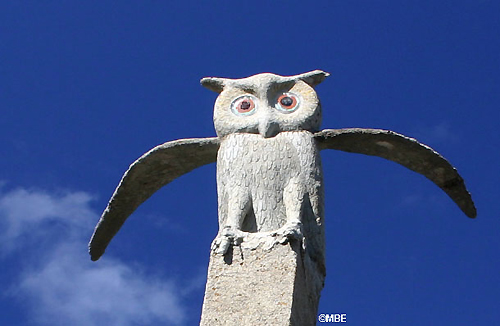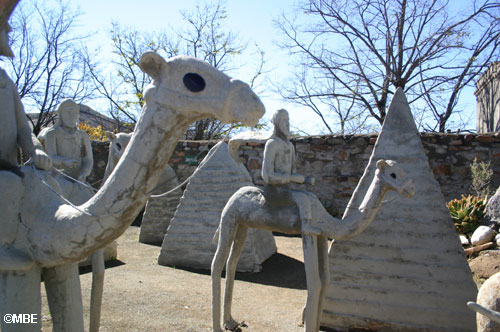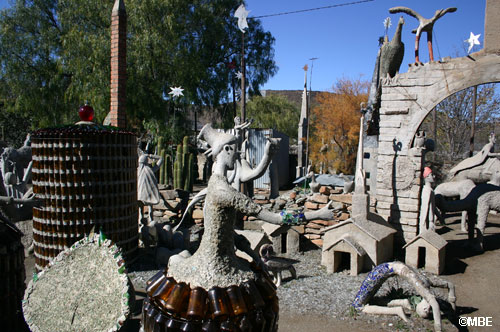Commonly known as ‘Miss Helen,’ Helen Elizabeth Martins was born on December 23 1897 in Nieu Bethedsa, the youngest of six children. Miss Helen moved from the small, isolated village in which she had spent her childhood to the Transvaal in 1919, where she worked as a teacher. The following year, she married Willem Johannes Pienaar, who was also a teacher. Unfortunately, the couple divorced just six years later after Pienaar left Miss Helen for another woman. During their tumultuous marriage, the couple appeared together in theatrical productions in Port 
Shortly on the heels of her divorce, Miss Helen returned to Nieu Bethesda where she cared for nearly the next two decades for her ailing parents. Following the death of her mother in 1941 and her father in 1945, Miss Helen began to isolate herself from her local community, and became somewhat of a recluse. The neighbors thought her a bit strange, but it was at this time she began to transform her home and garden with creations crafted of ‘glass and light.’ This art took the form of walls coated with crushed glass, murals, and mirrors enhanced from the light of burning candles.

Outsider Art was described by Jean Dubuffet, who coined the term, as “fantastic, raw, visionary art, created by individuals often maladjusted, with no art training, who work outside the mainstream of the art world”.
While she avoided people of the community as much as possible, Miss Helen opened her home up during the Christmas season and invited neighbors to enjoy her display of glass and light. Miss Helen employed Koos Malgas in 1964, a “colored” sheepshearer who many in the community suspected she was having an affair with as he remained close to her for the last 12 years of her life. Malgas helped Miss Helen create statues of cement and glass, transforming her former garden to a “sculpture yard” consisting of more than 300 statues depicting animals and other figures.

Sadly, in 1976 Miss Helen committed suicide after her eyesight began to fail. She reportedly swallowed a mixture of crushed glass in olive oil and caustic soda, not being able to bear the thought of losing her eyesight considering that her creations relied on light for the most part. Owls were an important part of Miss Helen’s life; she thought of them as highly insightful and intuitive, filled with wisdom. She and Malgas had begun work on the Owl House prior to her death; Malgas returned to restore the Owl House in 1991 as it had been declared a national monument.






